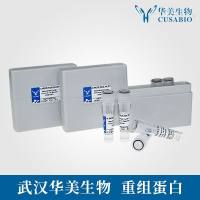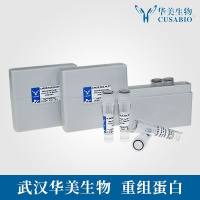Biotinylation of a Propargylated Cyclic (3′‐5′) Diguanylic Acid and of Its Mono‐6‐Thioated Analog Under “Click” Conditions
互联网
- Abstract
- Table of Contents
- Materials
- Figures
- Literature Cited
Abstract
Commercial N 2 ?isobutyryl?5??O ?(4,4??dimethoxytrityl)?2??O ?(propargyl)guanosine is converted to its 3??O ?levulinyl ester in a yield of 91%. The reaction of commercial N 2 ?isobutyryl?5??O ?(4,4??dimethoxytrityl)?2??O ?tert ?butyldimethylsilyl?3??O ?[(2?cyanoethyl)?N ,N ?diisopropylaminophosphinyl]guanosine with N 2 ?isobutyryl?2??O ?propargyl?3??O ?(levulinyl)guanosine provides, after P (III) oxidation, 3??/5??deprotection, and purification, the 2??O ?propargylated guanylyl(3??5?)guanosine 2?cyanoethyl phosphate triester in a yield of 88%. Phosphitylation of this dinucleoside phosphate triester with 2?cyanoethyl tetraisopropylphosphordiamidite and 1H ?tetrazole, followed by an in situ intramolecular cyclization, gives the propargylated cyclic dinucleoside phosphate triester, which is isolated in a yield of 40% after P (III) oxidation and purification. Complete removal of the nucleobases, phosphates, and 2??O ?tert ?butyldimethylsilyl protecting groups leads to the desired propargylated c?di?GMP diester. Cycloaddition of a biotinylated azide with the propargylated c?di?GMP diester under click conditions provides the biotinylated c?di?GMP conjugate in an isolated yield of 62%. Replacement of the 6?oxo function of N 2 ?isobutyryl?5??O ?(4,4??dimethoxytrityl)?3??O ?levulinyl?2??O ?(propargyl)guanosine with a 2?cyanoethylthio group is effected by treatment with 2,4,6?triisopropybenzenesulfonyl chloride and triethylamine to give a 6?(2,4,6?triisopropylbenzenesulfonic acid) ester intermediate. Reaction of this key intermediate with 3?mercaptoproprionitrile and triethylamine, followed by 5??dedimethoxytritylation, affords the 6?(2?cyanoethylthio)guanosine derivative in a yield of 70%. The 5??hydroxy function of this derivative is reacted with commercial N 2 ?isobutyryl?5??O ?(4,4??dimethoxytrityl)?2??O ?tert ?butyldimethylsilyl?3??O ?[(2?cyanoethyl)?N ,N ?diisopropylaminophosphinyl]guanosine. The reaction product is then converted to the mono?6?thioated c?di? GMP biotinylated conjugate under conditions highly similar to those described above for the preparation of the biotinylated c?di?GMP conjugate, and isolated in similar yields. Curr. Protoc. Nucleic Acid Chem. 52:14.9.1?14.9.20. © 2013 by John Wiley & Sons, Inc.
Keywords: propargylated c?di?GMP; biotinylated azide; click conjugation reaction; biotinylated c?di?GMP conjugate; 6?(2?cyanoethylthio)guanosine; c?di?GMP mono?6?thioated analog
Table of Contents
- Introduction
- Basic Protocol 1: Synthesis, Purification, and Characterization of the Mono‐6‐Thioated Analog of 2′‐O‐Propargylated Cyclic‐DI‐GMP
- Commentary
- Literature Cited
- Figures
Materials
Basic Protocol 1:
Materials
Basic Protocol 2:
Materials
Basic Protocol 3: Synthesis, Purification, and Characterization of the Mono‐6‐Thioated Analog of 2′‐O‐Propargylated Cyclic‐DI‐GMP
Materials
|
Figures
-
Figure 14.9.1 Synthesis of the propargylated dinucleoside phosphate triester 5 . Abbreviations: DMTr, 4,4′‐dimethoxytrityl; Lev, levulinyl; TBDMS, tert ‐butyldimethylsilyl; GiBu , 2‐( N ‐isobutyryl)guanin‐9‐yl. Adapted with permission from Grajkowski et al. (). Copyright 2010 American Chemical Society. View Image -
Figure 14.9.2 Synthesis of the propargylated c‐di‐GMP 9 from the propargylated dinucleoside phosphate triester 5 . Abbreviations: GiBu , 2‐( N ‐isobutyryl)guanin‐9‐yl; TBDMS, tert ‐butyldimethylsilyl; Gua, guanin‐9‐yl. Adapted with permission from Grajkowski et al. (). Copyright 2010 American Chemical Society. View Image -
Figure 14.9.3 Click synthesis of the biotinylated c‐di‐GMP conjugate 12 from the biotinylated azide 11 . Abbreviations: TBTA, tris ‐(benzyltriazolylmethyl)amine; Gua, guanin‐9‐yl. Adapted with permission from Grajkowski et al. (). Copyright 2010 American Chemical Society. View Image -
Figure 14.9.4 Synthesis of the propargylated dinucleoside phosphate triester 17 . Abbreviations: DMTr, 4,4′‐dimethoxytrityl; Lev, levulinyl; TPS, 2,4,6‐triisopropylbenzenesulfonyl; TBDMS, tert ‐butyldimethylsilyl; DMAP, 4‐(dimethylamino)pyridine; iBu, isobutyryl; GuaiBu , 2‐( N ‐isobutyryl)guanin‐9‐yl; NMP, 1‐methylpyrrolidine. View Image -
Figure 14.9.5 Synthesis of the propargylated c‐di‐GMP 21 from the propargylated dinucleoside phosphate triester 17 . Abbreviations: GuaiBu , 2‐( N ‐isobutyryl)guanin‐9‐yl; iBu, isobutyryl; TBDMS, tert ‐butyldimethylsilyl; Gua, guanin‐9‐yl. View Image -
Figure 14.9.6 Click synthesis of the biotinylated c‐di‐GMP conjugate 22 from the biotinylated azide 11 and mono‐6‐thioated analog of 2′‐ O ‐propargylated cyclic‐di‐GMP (21 ). Abbreviation: Gua, guanin‐9‐yl. View Image -
Figure 14.9.7 Chemical structure of a 3′,5′‐bis‐phosphoramidite, as a potential side‐product of the phosphitylation of 5 . Abbreviations: GuaiBu , 2‐( N ‐isobutyryl)guanin‐9‐yl; TBDMS, tert ‐butyldimethylsilyl. Adapted with permission from Grajkowski et al. (). Copyright 2010 American Chemical Society. View Image -
Figure 14.9.8 RP‐HPLC analysis of the conversion of the propargylated c‐di‐GMP triester 8 to the propargylated c‐di‐GMP 9 . (A ) Chromatogram of the silica gel‐purified propargylated c‐di‐GMP triester 8 . (B ) Chromatogram of the propargylated c‐di‐GMP 9 , which is obtained from silica gel‐purified 8 after treatment with: (1) concentrated aqueous ammonia for 30 hr at 25°C; and (2) triethylamine trihydrofluoride for 20 hr at 25°C. Analytical RP‐HPLC analyses are performed using a 5‐µm Supelcosil LC‐18S column (25 cm × 4.6 mm) according to the following conditions: starting from 0.1 M triethylammonium acetate, pH 7.0, a linear gradient of 2.5% MeCN/min is pumped at a flow rate of 1 mL/min for 40 min. Peak heights are normalized to the highest peak, which is set to 1 arbitrary unit. Reprinted with permission from Grajkowski et al. (). Copyright 2010 American Chemical Society View Image
Videos
Literature Cited
| Literature Cited | |
| Abdul‐Sater, A.A., Said‐Sadier, N., Ojcius, D.M., Yilmaz, O., and Kelly, K.A. 2009. Inflammasomes bridge signaling between pathogen identification and the immune response. Drugs Today 45:105‐112. | |
| Abdul‐Sater, A.A., Grajkowski, A., Erdjument‐Bromage, H., Plumlee, C., Levi, A., Schreiber, M.T., Lee, C., Shuman, H., Beaucage, S.L., and Schindler, C. 2012a. The overlapping host responses to bacterial cyclic dinucleotides. Microbes Infect. 14:188‐197. | |
| Abdul‐Sater, A., Jin, L., Grajkowski, A., Beaucage, S.L, Allen, I.C., Ting, J.P.‐Y., Cambier, J.C., and Schindler, C. 2012b. Cyclic‐diGMP and cyclic diAMP activate the NLRP3 inflammasome EMBO Reports. Submitted. | |
| Adams, C.J., Murray, J.B., Farrow, M.A., Arnold, J.R.P., and Stockley, P.G. 1995. Incorporation of 6‐thioguanosine into oligoribonucleotides. Tetrahedron Lett. 36:5421‐5424. | |
| Amiot, N., Heintz, K., and Giese, B. 2006. New approach for the synthesis of c‐di‐GMP and its analogues. Synthesis 24:4230‐4236. | |
| Barber, G.N. 2011. Innate immune DNA sensing pathways: STING, AIMII and the regulation of interferon production and inflammatory responses. Curr. Opin. Immunol. 23:10‐20. | |
| Berndl, S., Herzig, N., Kele, P., Lachmann, D., Li, X., Wolfbeis, O.S., and Wagenknecht, H.‐A. 2009. Comparison of a nucleosidic vs non‐nucleosidic postsynthetic “click” modification of DNA with base‐labile fluorescent probes. Bioconjug. Chem. 20:558‐564. | |
| Burdette, D.L., Monroe, K.M., Sotelo‐Troha, K., Iwig, J.S., Eckert, B., Hyodo, M., Hayakawa, Y., and Vance, R.E. 2011. STING is a direct innate immune sensor of cyclic di‐GMP. Nature 478:515‐519. | |
| Chan, T.R., Hilgraf, R., Sharpless, K.B., and Fokin, V.V. 2004. Polytriazoles as copper(I)‐stabilizing ligands in catalysis. Org. Lett. 6:2853‐2855. | |
| Dyke, J.M., Groves, A.P., Morris, A., Ogden, J.S., Dias, A.A., Oliveira, A.M.S., Costa, M.L., Barros, M.T., Cabral, M.H., and Moutinho, A.M.C. 1997. Study of the thermal decomposition of 2‐azidoacetic acid by photoelectron and matrix isolation infrared spectroscopy. J. Am. Chem. Soc. 119:6883‐6887. | |
| Galperin, M.Y. 2005. A census of membrane‐bound and intracellular signal transduction proteins in bacteria: Bacterial IQ, extroverts and introverts. BMC Microbiol. 5:35. | |
| Gerber, R.E, Hasbun, C., Dubenko, L.G., Fong King, M., and Bierer, D.E. 2000. β‐Mercaptopropionitrile. In Organic Syntheses, Vol. 77. (D. J. Hart, ed.) pp. 186‐197, John Wiley & Sons, New York. | |
| Grajkowski, A., Cieślak, J., Gapeev, A., Schindler, C., and Beaucage, S.L. 2010. Convenient synthesis of a propargylated cyclic (3′‐5′) diguanylic acid and its “click” conjugation to a biotinylated azide. Bioconjug. Chem. 21:2147‐2152. | |
| Gross, O., Thomas, C.J., Guarda, G., and Tschopp, J. 2011. The inflammasome: An integrated view. Immunol. Rev. 243:136‐151. | |
| Gu, C. and Wang, Y. 2007. In vitro replication and thermodynamic studies of methylation and oxidation modifications of 6‐thioguanine. Nucleic Acids Res. 35:3693‐3704. | |
| Guo, Z. and Xue, J. 2009. Levulinic anhydride. In Encyclopedia of Reagents for Organic Synthesis, 2nd Edition (L.A. Paquette, D. Crich, P.L. Fuchs, and G. Molander, eds.) pp 5961‐5963. John Wiley & Sons, Hoboken. | |
| Hassner, A., Strand, G., Rubinstein, M., and Patchornik, A. 1975. Levulinic esters. Alcohol protecting group applicable to some nucleosides. J. Am. Chem. Soc. 97:1614‐1615. | |
| Hayakawa, Y., Nagata, R., Hirata, A., Hyodo, M., and Kawai, R. 2003. A facile synthesis of cyclic bis(3′→5′)diguanylic acid. Tetrahedron 59:6465‐6471. | |
| Hengge, R. 2009. Principles of c‐di‐GMP signaling in bacteria. Nat. Rev. Microbiol. 7:263‐273. | |
| Hu, D.‐L., Narita, K., Hyodo, M., Hayakawa, Y., Nakane, A., and Karaolis, D.K.R. 2009. c‐di‐GMP as a vaccine adjuvant enhances protection against systemic methicillin‐resistant Staphylococcus aureus (MRSA) infection. Vaccine 27:4867‐4873. | |
| Humes, E. and Yan, H. 2006. Convenient synthesis of 3′,5′‐cyclic diguanylic acid (cdiGMP). Nucleic Acids Symp. Ser. 50:5‐6. | |
| Hyodo, M. and Hayakawa, Y. 2004. An improved method for synthesizing cyclic bis(3′‐5′)diguanylic acid (c‐di‐GMP). Bull. Chem. Soc. Jpn. 77:2089‐2093. | |
| Hyodo, M., Sato, Y., and Hayakawa, Y. 2006. Synthesis of cyclic bis(3′‐5′)diguanylic acid (c‐di‐GMP) analogs. Tetrahedron 62:3089‐3094. | |
| Iwasaki, A. and Medzhitov, R. 2010. Regulation of adaptive immunity by the innate immune system. Science 327:291‐295. | |
| Karaolis, D.K.R., Means, T.K., Yang, D., Takahashi, M., Yoshimura, T., Muraille, E., Philpott, D., Schroeder, J.T., Hyodo, M., Hayakawa, Y., Talbot, B.G., Brouillette, E., and Malouin, F. 2007a. Bacterial c‐di‐GMP is an immunostimulatory molecule. J. Immunol. 178:2171‐2181. | |
| Karaolis, D.K.R., Newstead, M.W., Zeng, X., Hyodo, M., Hayakawa, Y., Bhan, U., Liang, H., and Standiford, T.J. 2007b. Cyclic di‐GMP stimulates protective innate immunity in bacterial pneumonia. Infect. Immun. 75:4942‐4950. | |
| Kiburu, I., Shurer, A., Yan, L., and Sintim, H.O. 2008. A simple solid‐phase synthesis of the ubiquitous bacterial signaling molecule, c‐di‐GMP and analogues. Mol. BioSyst. 4:518‐520. | |
| McWhirter, S.M., Barbalat, R., Monroe, K.M., Fontana, M.F., Hyodo, M., Joncker, N.T., Ishii, K.J., Akira, S., Colonna, M., Chen, Z.J., Fitzgerald, K.A., Hayakawa, Y., and Vance, R.E. 2009. A host type I interferon response is induced by cytosolic sensing of the bacterial second messenger cyclic‐di‐GMP. J. Exp. Med.206:1899‐1911. | |
| Ogunniyi, A.D., Paton, J.C., Kirby, A.C., McCullers, J.A., Cook, J., Hyodo, M., Hayakawa, Y., and Karaolis, D.K.R. 2008. c‐di‐GMP is an effective immunomodulator and vaccine adjuvant against pneumococcal infection. Vaccine 26:4676‐4685. | |
| Ouyang, S., Song, X., Wang, Y., Ru, H., Shaw, N., Jiang, Y., Niu, F., Zhu, Y., Qiu, W., Parvatiyar, K., Li, Y., Zhang, R, Cheng, G., and Liu, Z.‐J. 2012. Structural analysis of the STING adaptor protein reveals a hydrophobic dimer interface and mode of cyclic di‐GMP binding. Immunity 36:1073‐1086. | |
| Rao, F., Pasunooti, S., Ng, Y., Zhuo, W., Lim, L., Liu, A.W., and Liang, Z.–X. 2009. Enzymatic synthesis of c‐di‐GMP using a thermophilic diguanylate cyclase. Anal. Biochem. 389:138‐142. | |
| Ross, P., Weinhouse, H., Aloni, Y., Michaeli, D., Weinberger‐Ohana, P., Mayer, R., Braun, S., de Vroom, E., van der Marel, G.A., van Boom, J.H., and Benziman, M. 1987. Regulation of cellulose synthesis in Acetobacter xylinum by cyclic diguanylic acid. Nature 325:279‐281. | |
| Ross, P., Mayer, R., Weinhouse, H., Amikam, D., Huggirat, Y., Benziman, M., de Vroom, E., Fidder, A., de Paus, P., Sliedregt, L.A.J.M., van der Marel, G.A., and van Boom, J.H. 1990. The cyclic diguanylic acid regulatory system of cellulose synthesis in Acetobacter xylinum. J. Biol. Chem. 265:18933‐18943. | |
| Rostovtsev, V.V., Green, L.G., Fokin, V.V., and Sharpless, K.B. 2002. A stepwise Huisgen cycloaddition process: Copper(I)‐catalyzed regioselective “ligation” of azides and terminal alkynes. Angew. Chem. Int. Ed. 41:2596‐2599. | |
| Schroder, K., Muruve, D.A., and Tschopp, J. 2009. Innate immunity: Cytoplasmic DNA sensing by the AIM2 inflammasome. Curr. Biol. 19:R262‐R265. | |
| Simm, R., Morr, M., Remminghorst, U., Andersson, M., and Römling, U. 2009. Quantitative determination of cyclic diguanosine monophosphate concentrations in nucleotide extracts of bacteria by matrix‐assisted laser desorption/ionization–time‐of‐flight mass spectrometry. Anal. Biochem. 386:53‐58. | |
| Tornøe, C.W., Christensen, C., and Meldal, M. 2002. Peptidotriazoles on solid phase: [1,2,3]‐Triazoles by regiospecific copper(I)‐catalyzed 1,3‐dipolar cycloadditions of terminal alkynes to azides. J. Org. Chem. 67:3057‐3064. | |
| Trinchieri, G. 2010. Type I interferon: Friend or foe? J. Exp. Med. 207:2053‐2063. | |
| Trinchieri, G. and Sher, A. 2007. Cooperation of toll‐like receptor signals in innate immune defence. Nat. Rev. Immunol. 7:179‐190. | |
| Woodward, J.J., Iavarone, A.T., and Portnoy, D.A. 2010. c‐di‐AMP secreted by intracellular Listeria monocytogenes activates a host type I interferon response. Science 328:1703‐1705. | |
| Yan, H. and Chen, W. 2010. 3′,5′‐Cyclic diguanylic acid: A small nucleotide that makes big impacts. Chem. Soc. Rev. 39:2914‐2924. | |
| Yan, H. and López Aguilar, A. 2007. Synthesis of 3′,5′‐cyclic diguanylic acid (cdiGMP) using 1‐(4‐chlorophenyl)‐4‐ethoxypiperidin‐4‐yl as a protecting group for 2′‐hydroxy functions of ribonucleosides. Nucleosides Nucleotides Nucleic Acids 26:189‐204. | |
| Zhang, Z., Gaffney, B.L., and Jones, R.A. 2004. c‐di‐GMP displays a monovalent metal ion‐dependent polymorphism. J. Am. Chem. Soc. 126:16700‐16701. | |
| Zheng, Q., Xu, Y‐Z., and Swann, P.F. 1997. Photochemical cross‐linking of λ‐cro repressor to operator DNA containing 4‐thiothymine or 6‐thioguanine. Nucleosides Nucleotides 16:1799‐1803. |



![DKFZ-PSMA-11,4,6,12,19-Tetraazadocosane-1,3,7-tricarboxylic acid, 22-[3-[[[2-[[[5-(2-carboxyethyl)-2-hydroxyphenyl]methyl](carboxymethyl)amin](https://img1.dxycdn.com/p/s14/2025/1009/171/0405943971658126791.jpg!wh200)





